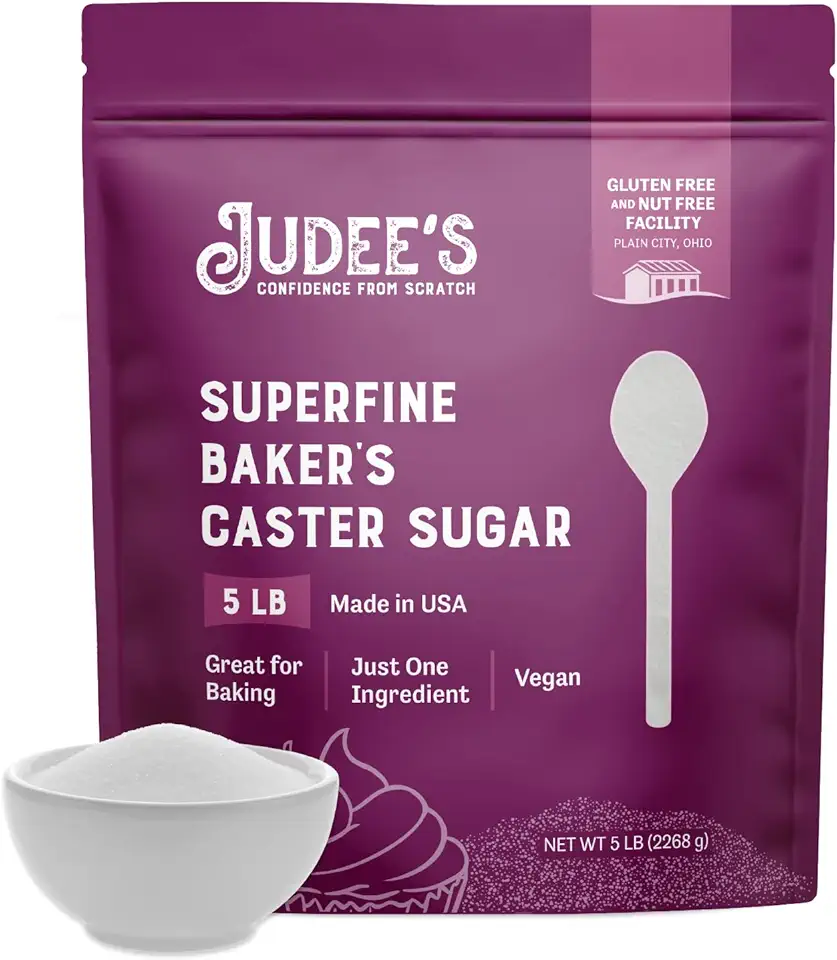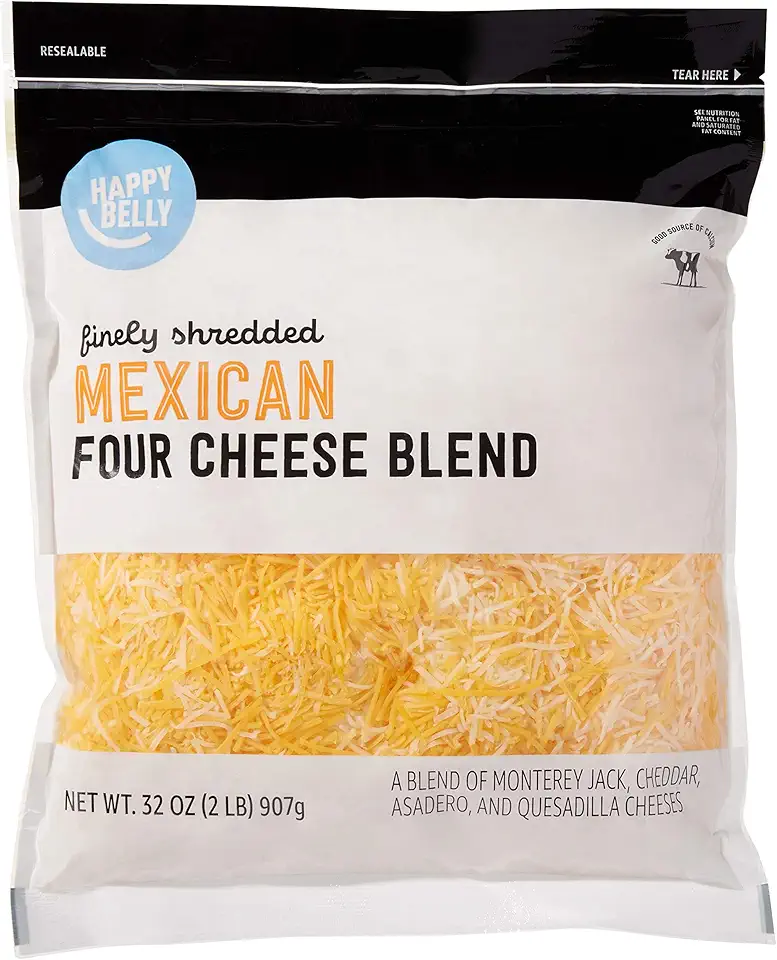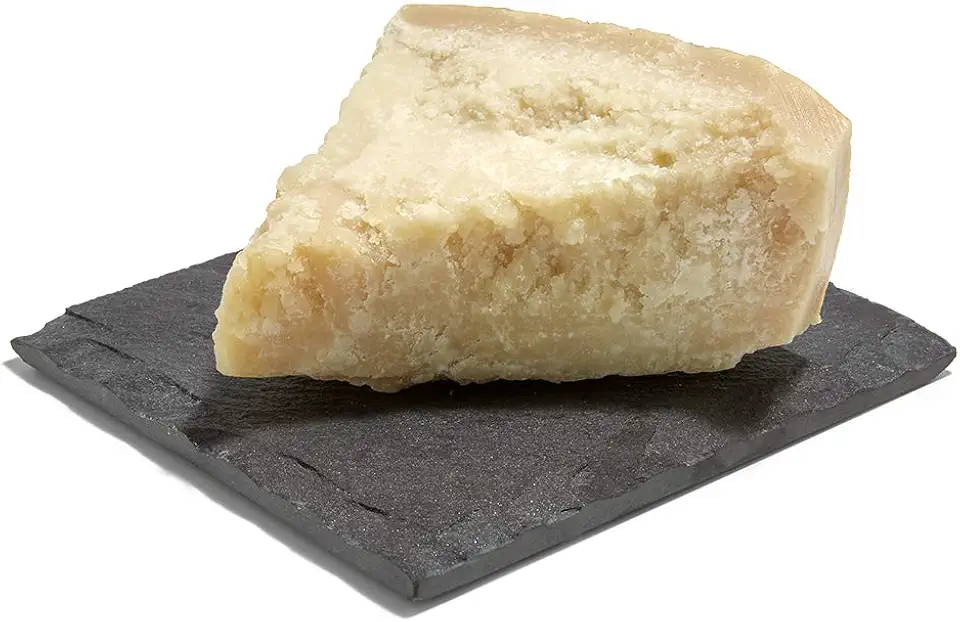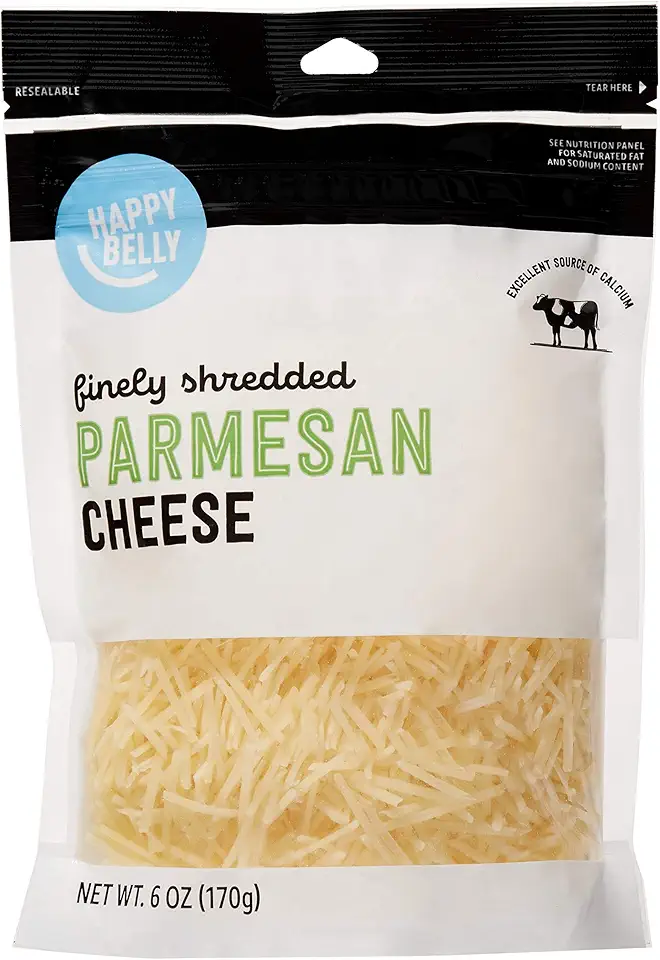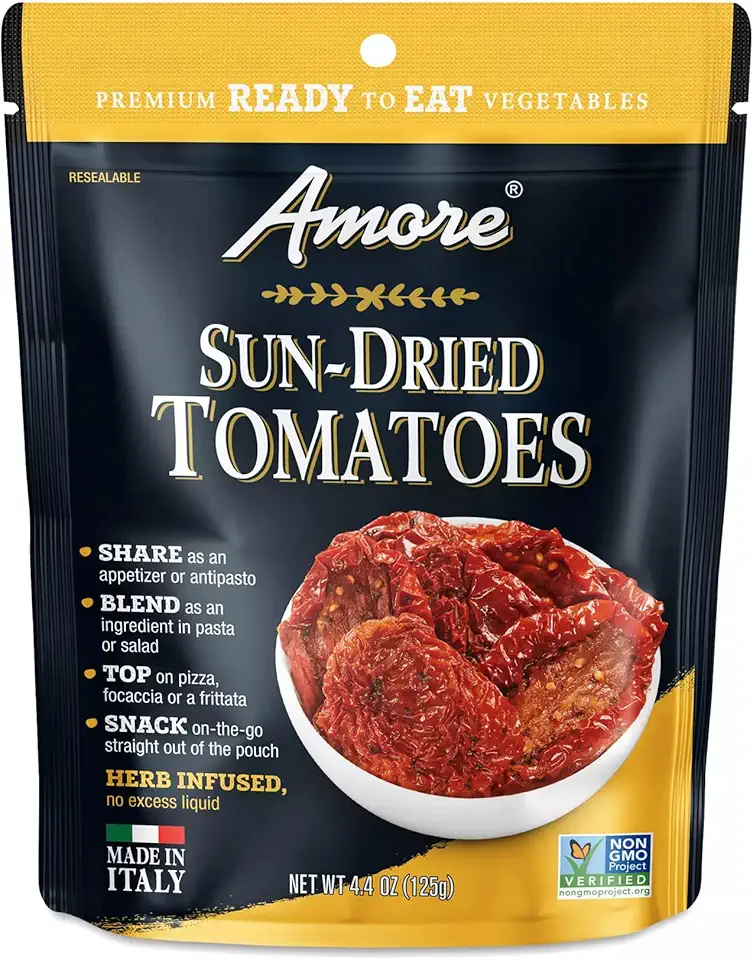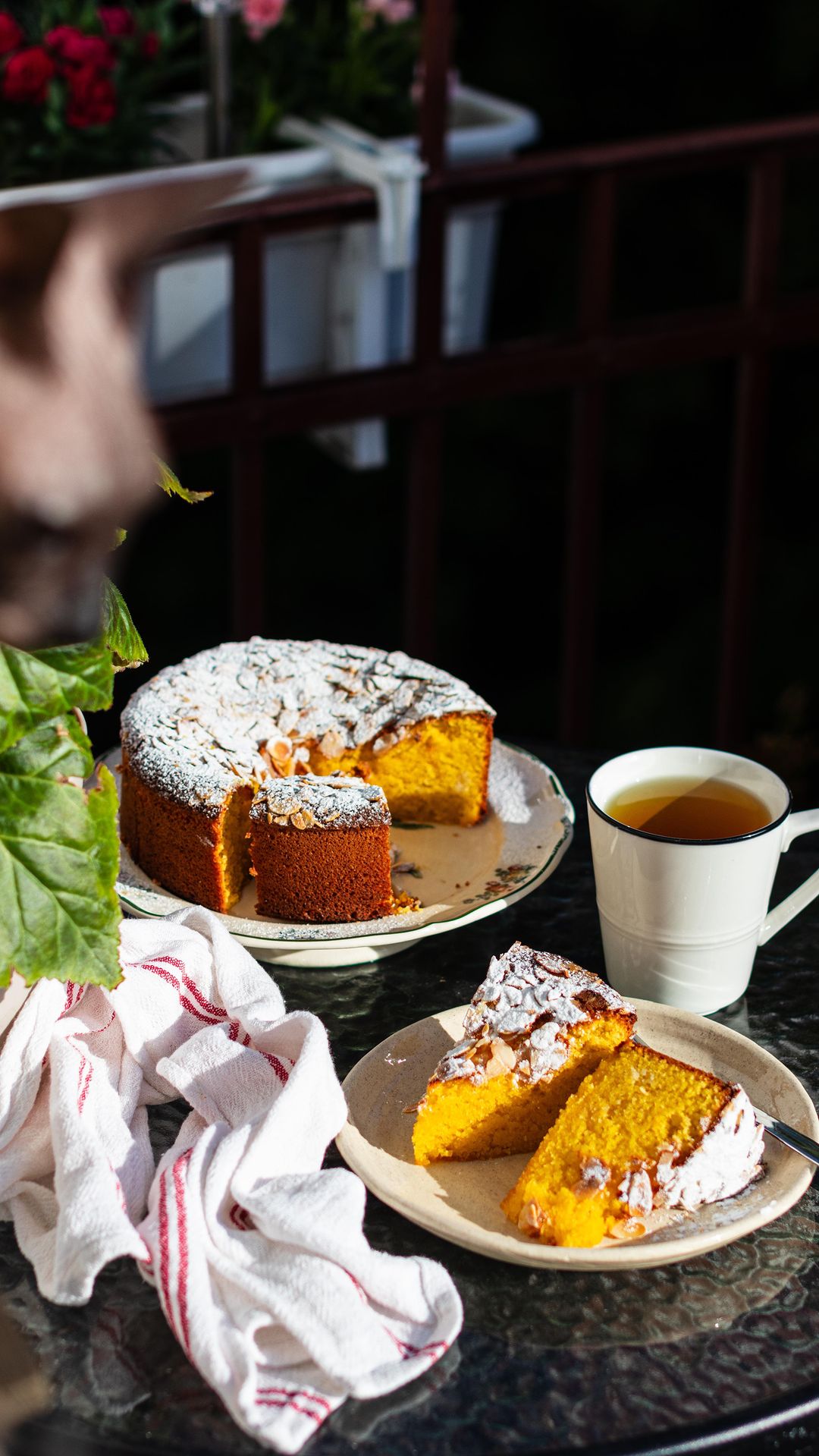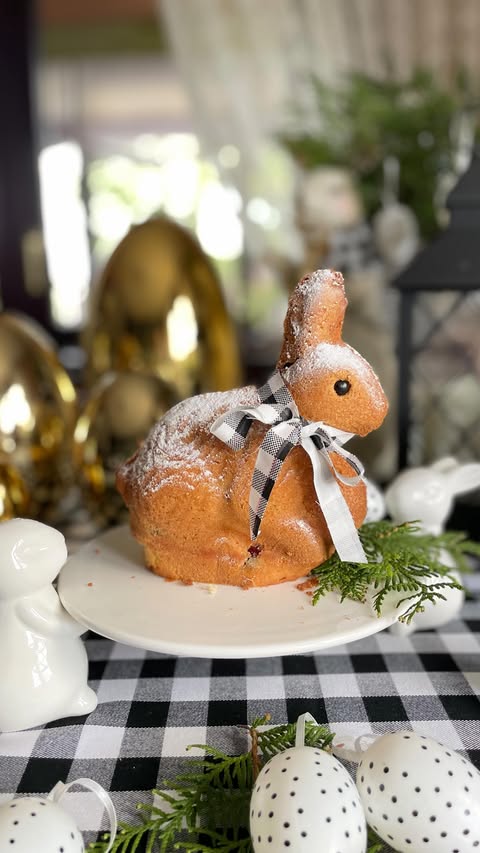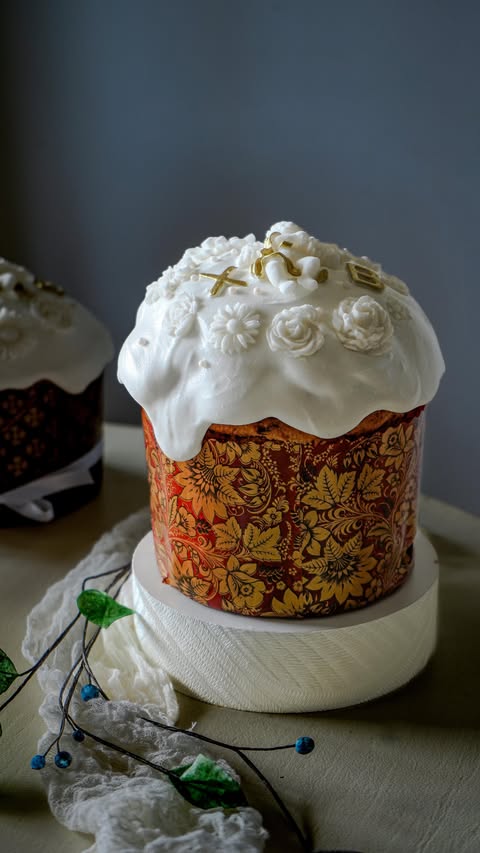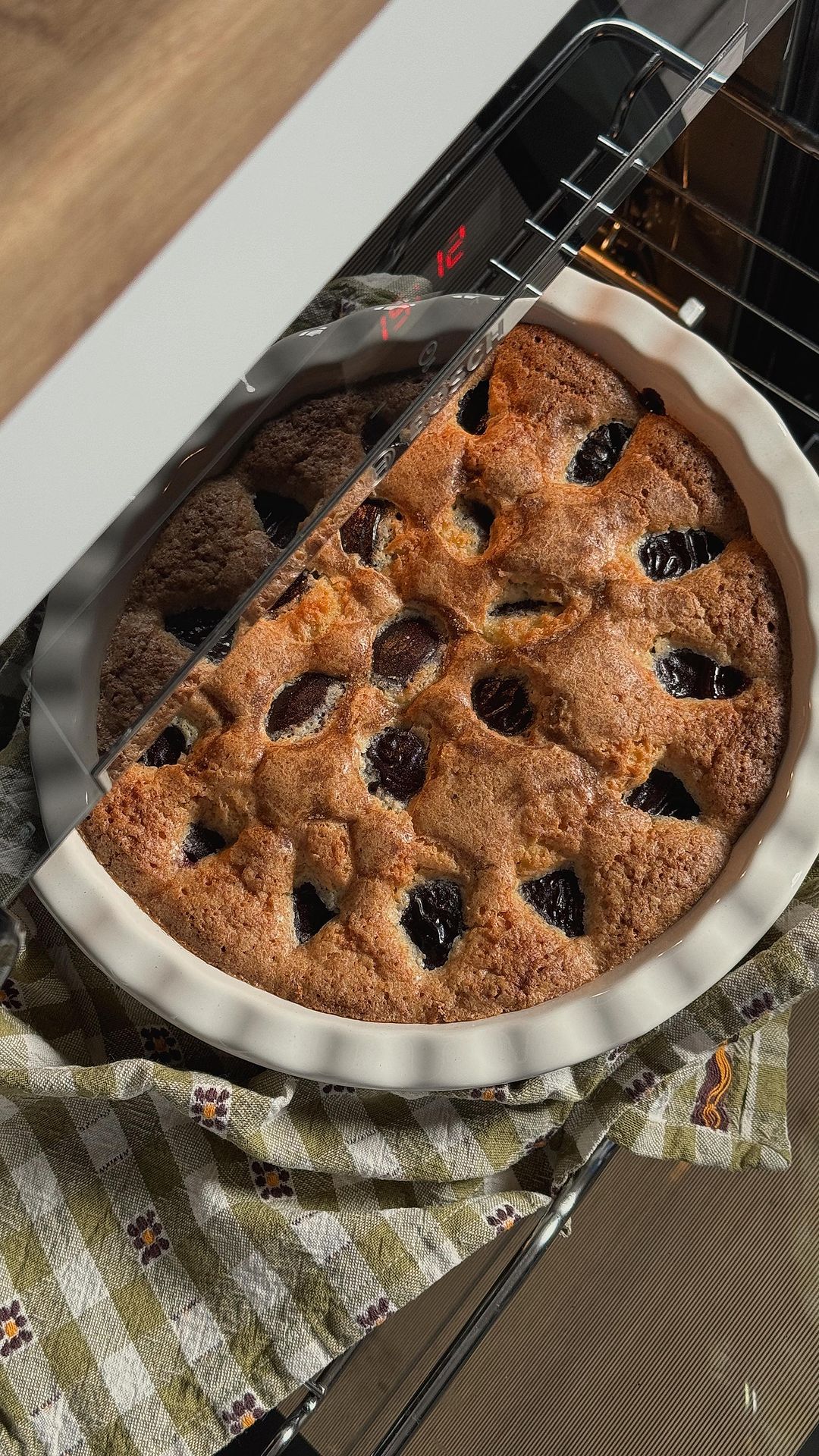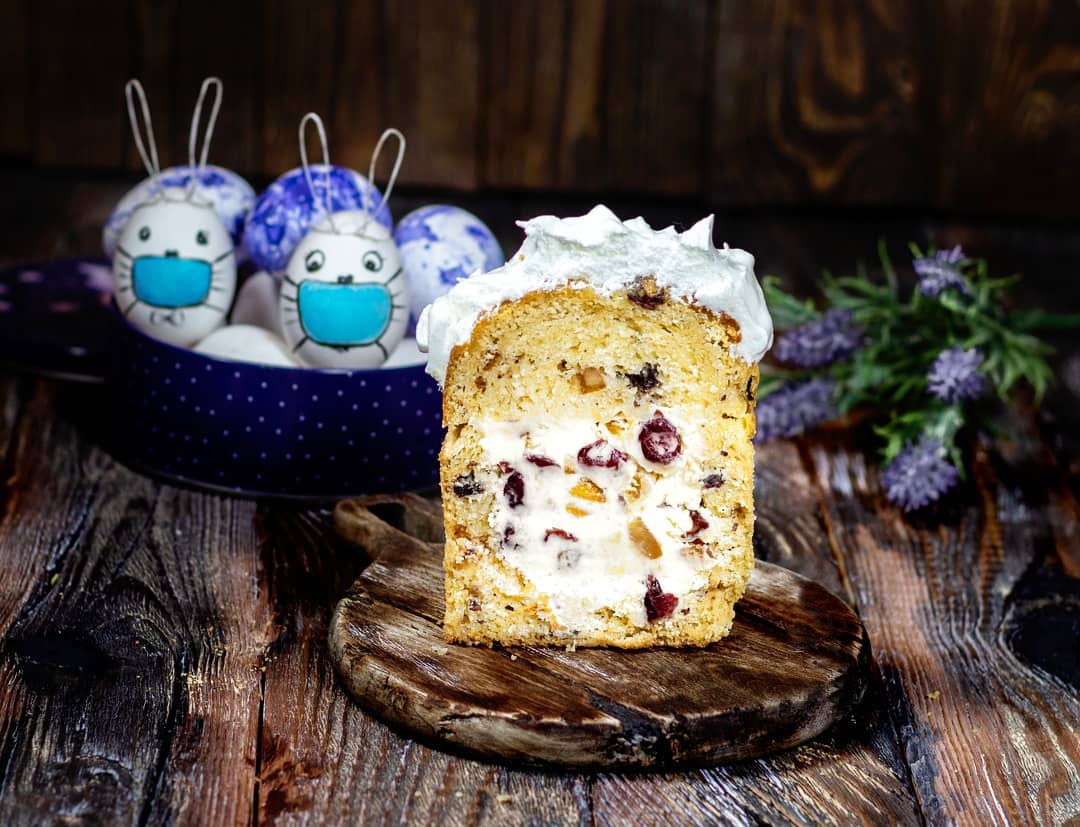Ingredients
Classic Easter Cake Ingredients
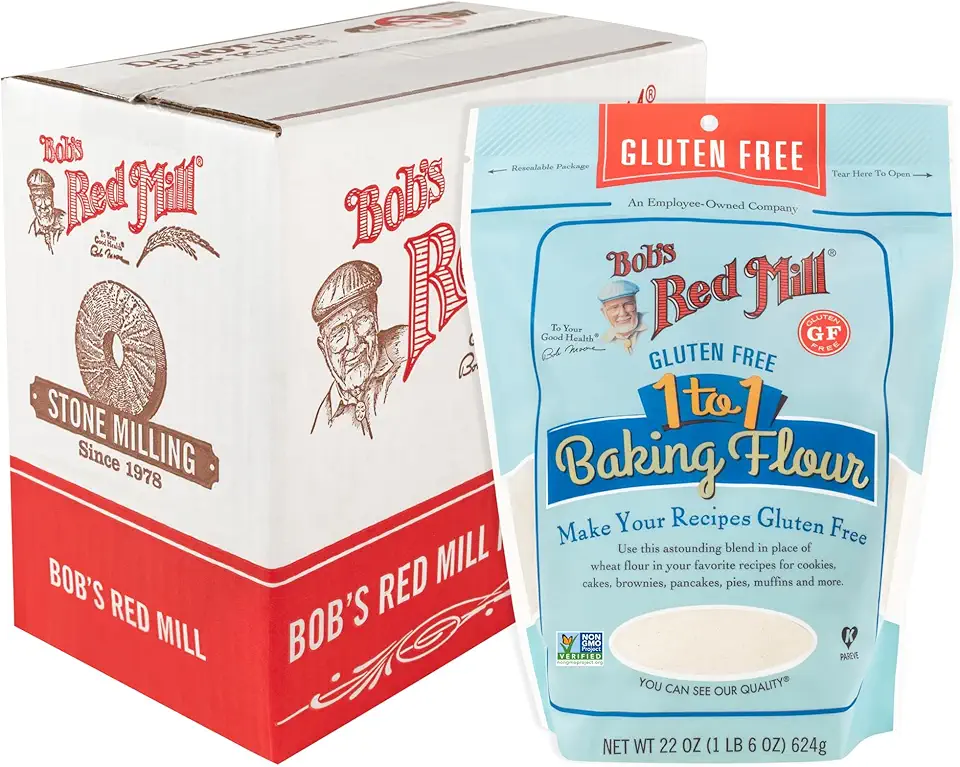 Bob's Red Mill Gluten Free 1-to-1 Baking Flour, 22 Ounce (Pack of 4)
$23.96
View details
Prime
Bob's Red Mill Gluten Free 1-to-1 Baking Flour, 22 Ounce (Pack of 4)
$23.96
View details
Prime
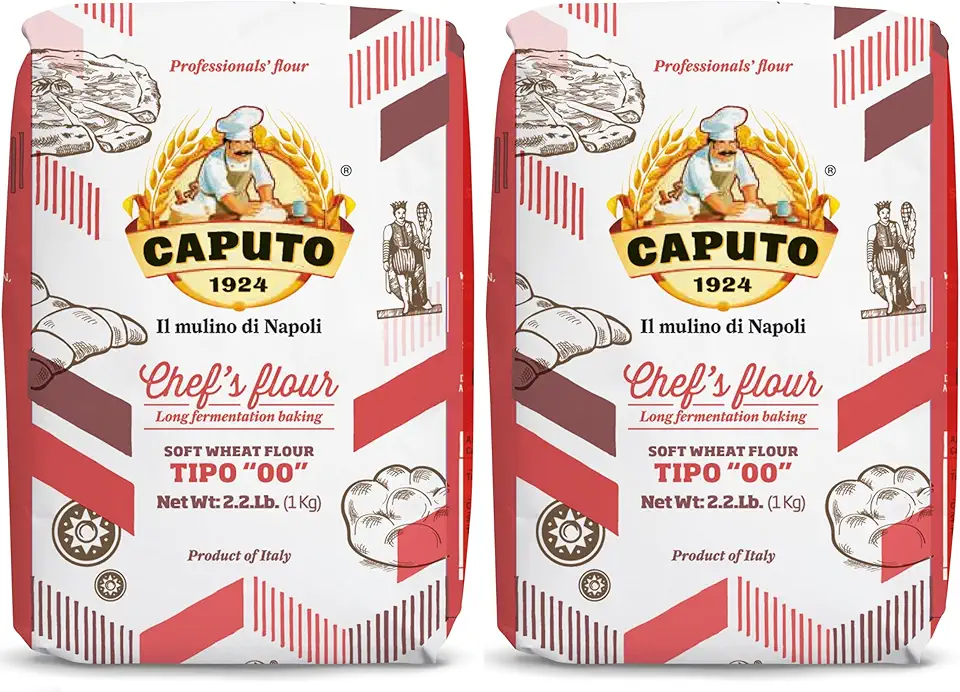 Antimo Caputo Chefs Flour - Italian Double Zero 00 - Soft Wheat for Pizza Dough, Bread, & Pasta, 2.2 Lb (Pack of 2)
$16.99
View details
Prime
best seller
Antimo Caputo Chefs Flour - Italian Double Zero 00 - Soft Wheat for Pizza Dough, Bread, & Pasta, 2.2 Lb (Pack of 2)
$16.99
View details
Prime
best seller
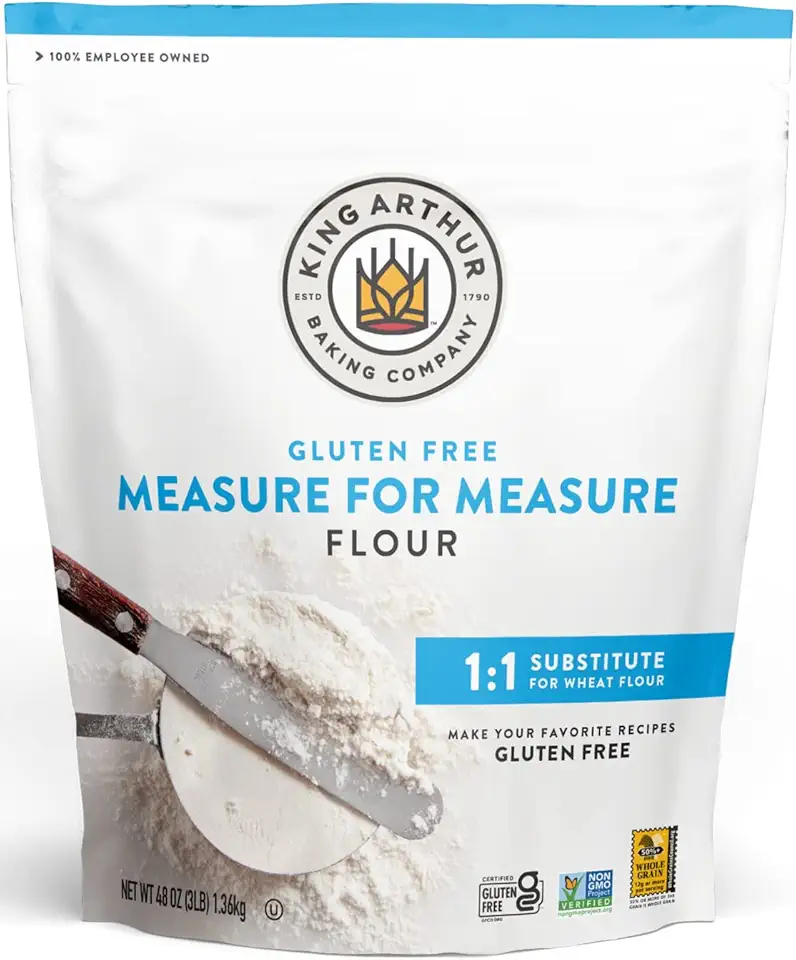 King Arthur, Measure for Measure Flour, Certified Gluten-Free, Non-GMO Project Verified, Certified Kosher, 3 Pounds, Packaging May Vary
$8.62
View details
King Arthur, Measure for Measure Flour, Certified Gluten-Free, Non-GMO Project Verified, Certified Kosher, 3 Pounds, Packaging May Vary
$8.62
View details
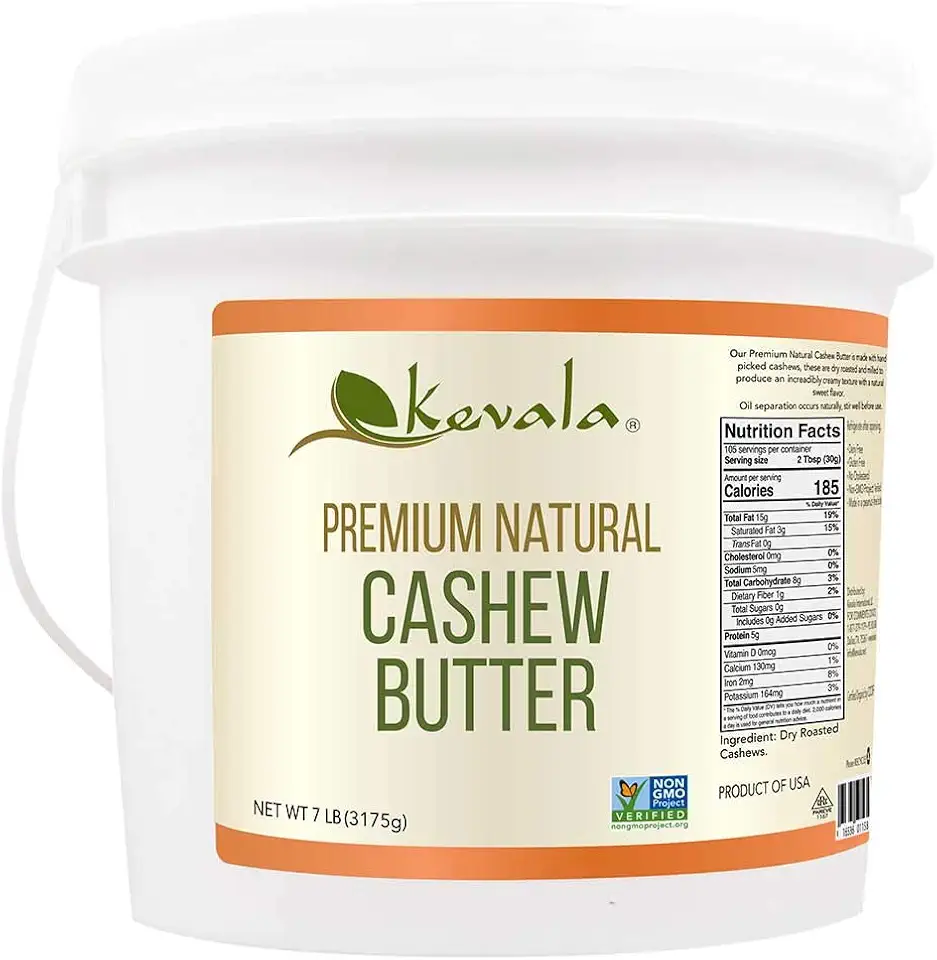 Kevala Cashew Butter 7 Lbs Pail
$83.62
View details
Prime
best seller
Kevala Cashew Butter 7 Lbs Pail
$83.62
View details
Prime
best seller
 4th & Heart Original Grass-Fed Ghee, Clarified Butter, Keto, Pasture Raised, Lactose and Casein Free, Certified Paleo (9 Ounces)
$11.49
View details
Prime
4th & Heart Original Grass-Fed Ghee, Clarified Butter, Keto, Pasture Raised, Lactose and Casein Free, Certified Paleo (9 Ounces)
$11.49
View details
Prime
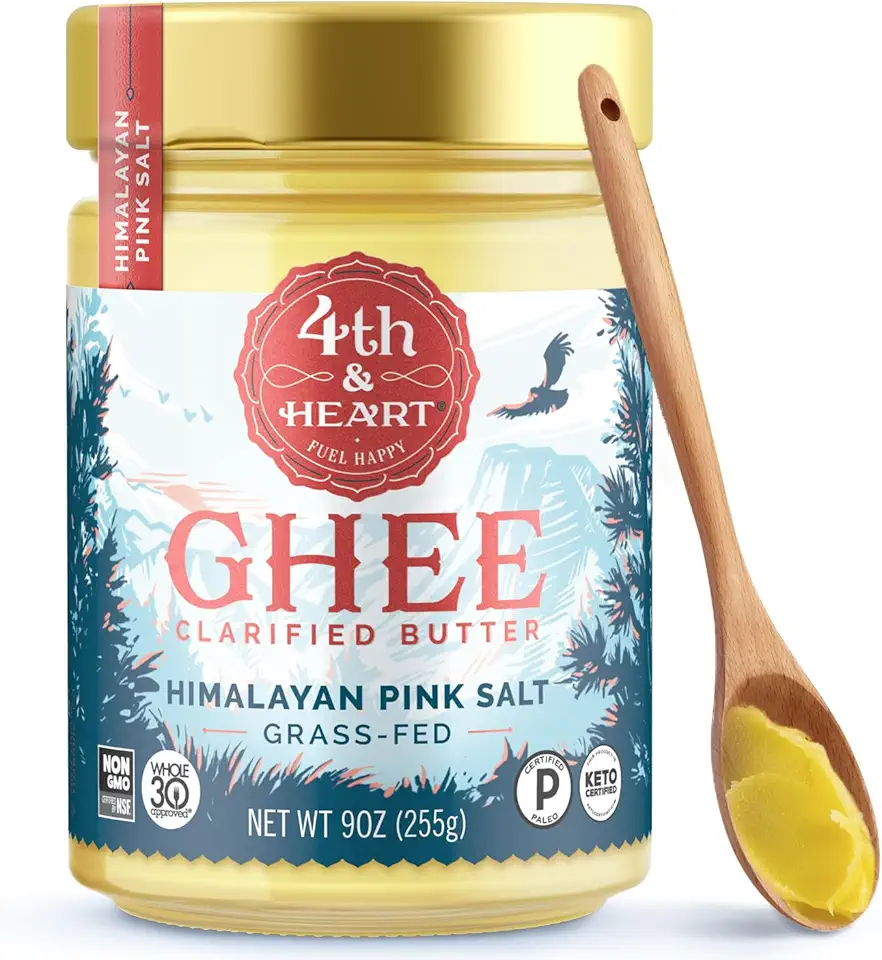 4th & Heart Himalayan Pink Salt Grass-Fed Ghee, Clarified Butter, Keto Pasture Raised, Non-GMO, Lactose and Casein Free, Certified Paleo (9 Ounces)
$9.49
View details
4th & Heart Himalayan Pink Salt Grass-Fed Ghee, Clarified Butter, Keto Pasture Raised, Non-GMO, Lactose and Casein Free, Certified Paleo (9 Ounces)
$9.49
View details
 Elmhurst Milked Toasted Almond Vanilla Latte 25.4 Ounce (Pack of 6)
$47.94
View details
Elmhurst Milked Toasted Almond Vanilla Latte 25.4 Ounce (Pack of 6)
$47.94
View details
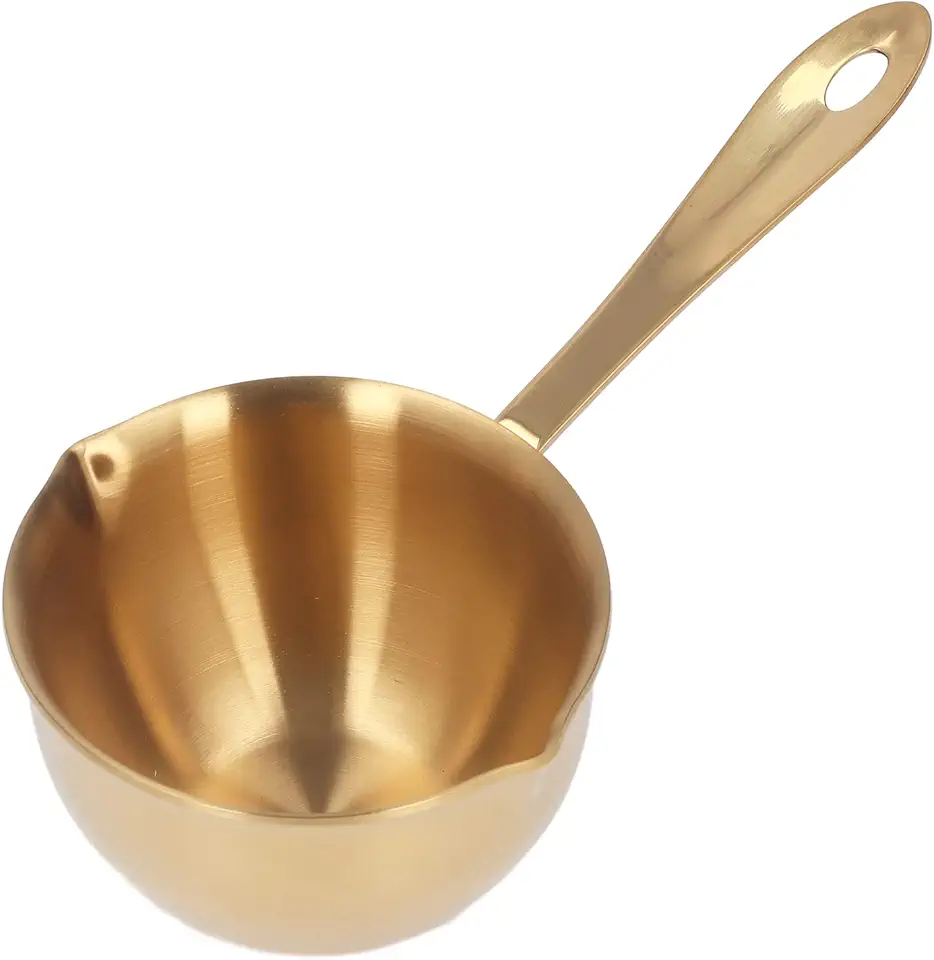 Mini Pot Butter Warmer Cooking Sauce PanStainless Steel Pan for Chocolate Hot Oil (Gold) Other Kitchen Tools & Accessories
$17.62
View details
Prime
Mini Pot Butter Warmer Cooking Sauce PanStainless Steel Pan for Chocolate Hot Oil (Gold) Other Kitchen Tools & Accessories
$17.62
View details
Prime
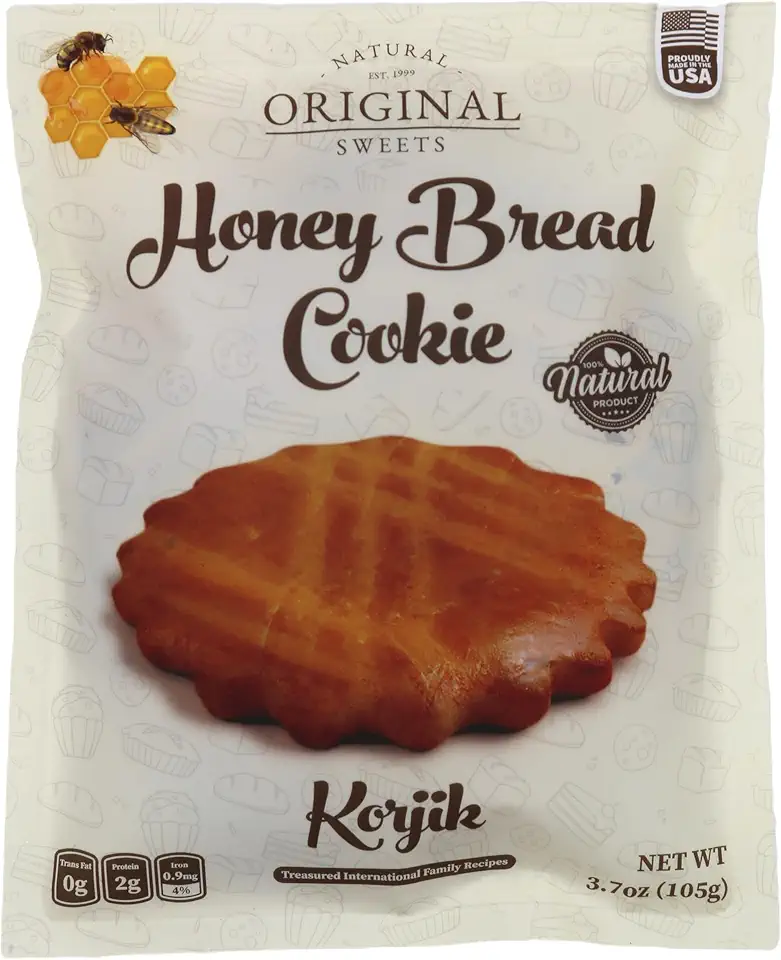 Original Natural Sweets - Honey Bread Cookie, Korjik, Artisanal, Sweet & Crunchy, Perfect with Tea or Coffee- Authentic European Recipe, Gourmet Snak, Cookie for kids and adult
$7.99
View details
Original Natural Sweets - Honey Bread Cookie, Korjik, Artisanal, Sweet & Crunchy, Perfect with Tea or Coffee- Authentic European Recipe, Gourmet Snak, Cookie for kids and adult
$7.99
View details
 Anthony's Premium Nutritional Yeast Flakes, 1 lb, Fortified, Gluten Free, Non GMO, Vegan
$18.49
View details
Prime
Anthony's Premium Nutritional Yeast Flakes, 1 lb, Fortified, Gluten Free, Non GMO, Vegan
$18.49
View details
Prime
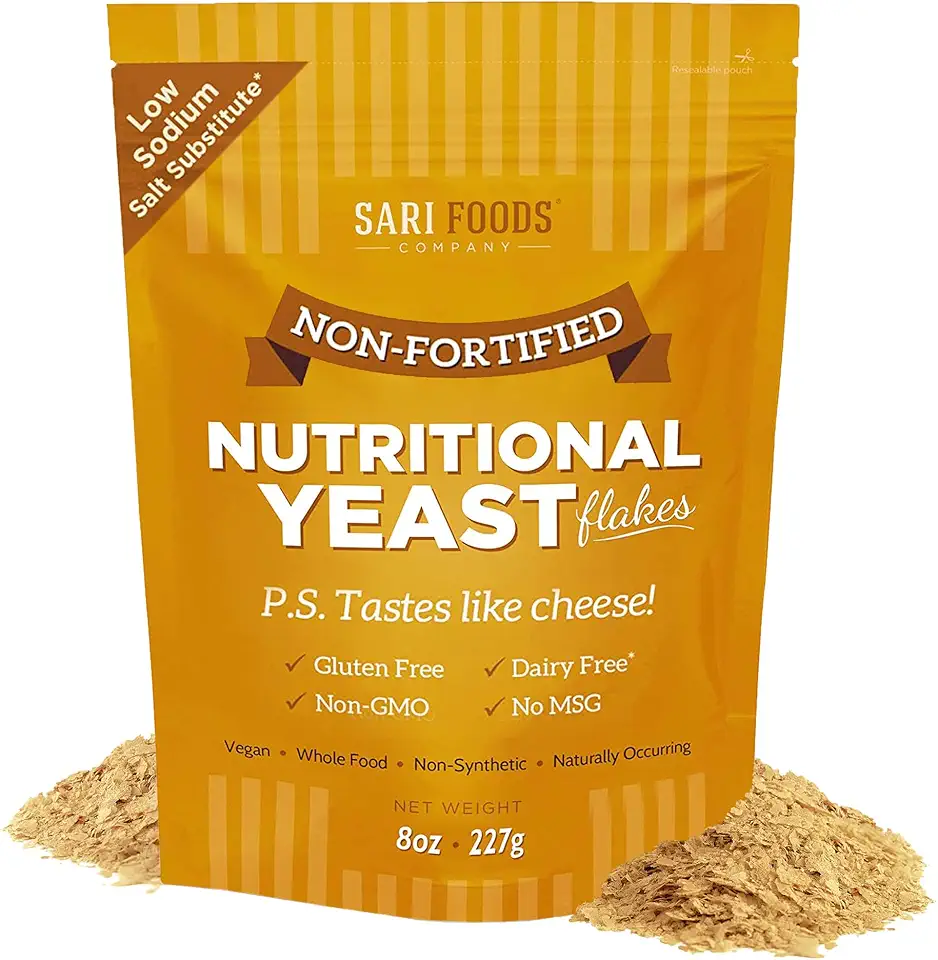 Sari Foods Non-Fortified Nutritional Yeast Flakes - 24oz or 8oz - Superfood, Rich in Protein. Gluten Free & Dairy Free Vegan Cheese Substitute, Vitamins B, Beta-glucans and all 18 Amino Acids, Non GMO
$17.99
View details
Prime
Sari Foods Non-Fortified Nutritional Yeast Flakes - 24oz or 8oz - Superfood, Rich in Protein. Gluten Free & Dairy Free Vegan Cheese Substitute, Vitamins B, Beta-glucans and all 18 Amino Acids, Non GMO
$17.99
View details
Prime
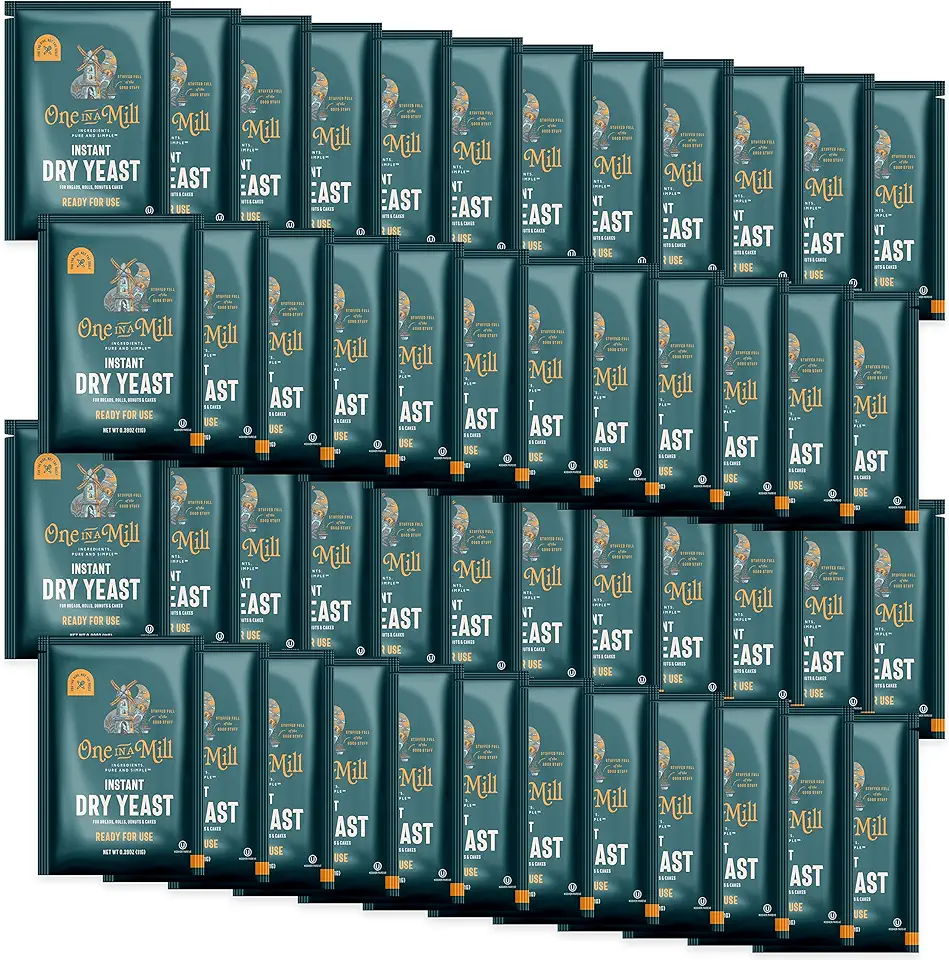 One in a Mill Instant Dry Yeast Packets | Fast Acting Self Rising Yeast for Baking Bread, Cake, Pizza Dough Crust | Kosher | Quick Rapid Rise Leavening Agent for Pastries | 48 Packets
$42.99
View details
One in a Mill Instant Dry Yeast Packets | Fast Acting Self Rising Yeast for Baking Bread, Cake, Pizza Dough Crust | Kosher | Quick Rapid Rise Leavening Agent for Pastries | 48 Packets
$42.99
View details
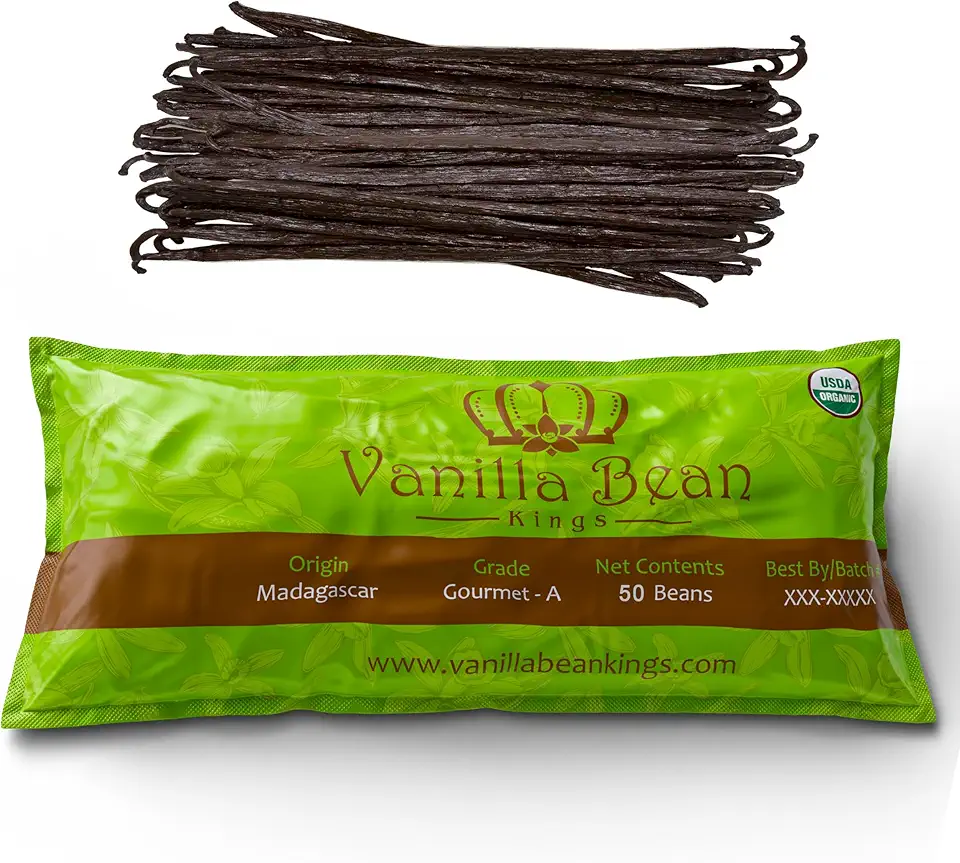 50 Organic Madagascar Vanilla Beans. Whole Grade A Vanilla Pods for Vanilla Extract and Baking
$39.99
View details
Prime
50 Organic Madagascar Vanilla Beans. Whole Grade A Vanilla Pods for Vanilla Extract and Baking
$39.99
View details
Prime
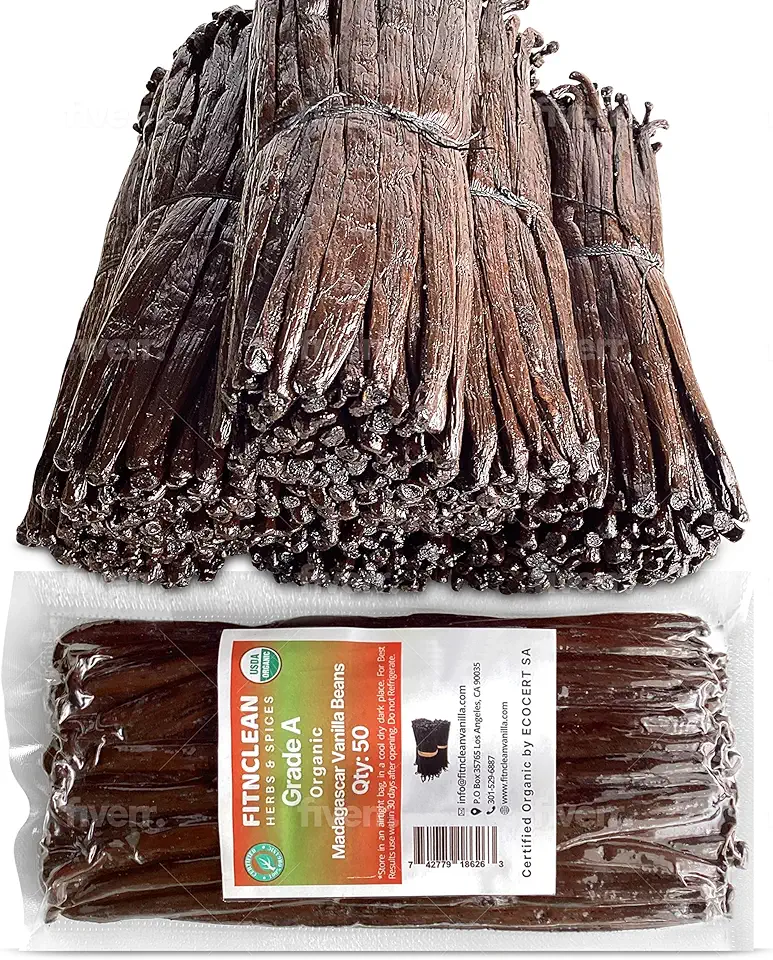 50 Organic Grade A Madagascar Vanilla Beans. Certified USDA Organic for Extract and all things Vanilla by FITNCLEAN VANILLA. ~5" Bulk Fresh Bourbon NON-GMO Pods.
$37.99
View details
Prime
50 Organic Grade A Madagascar Vanilla Beans. Certified USDA Organic for Extract and all things Vanilla by FITNCLEAN VANILLA. ~5" Bulk Fresh Bourbon NON-GMO Pods.
$37.99
View details
Prime
 Nielsen-Massey Madagascar Bourbon Pure Vanilla Extract for Baking and Cooking, 4 Ounce Bottle
$19.95
View details
Nielsen-Massey Madagascar Bourbon Pure Vanilla Extract for Baking and Cooking, 4 Ounce Bottle
$19.95
View details
Gastro-Version Ingredients
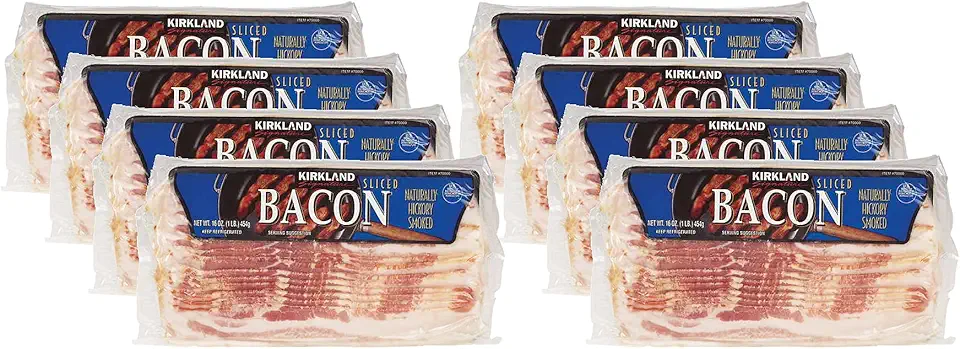 Gourmet Kitchn Kirkland Signature Premium Sliced Bacon - Naturally Hickory Smoked - 8 Total Packages of 1 Lb Each Package - Bulk Size, 2 Pack
$96.91
View details
Gourmet Kitchn Kirkland Signature Premium Sliced Bacon - Naturally Hickory Smoked - 8 Total Packages of 1 Lb Each Package - Bulk Size, 2 Pack
$96.91
View details
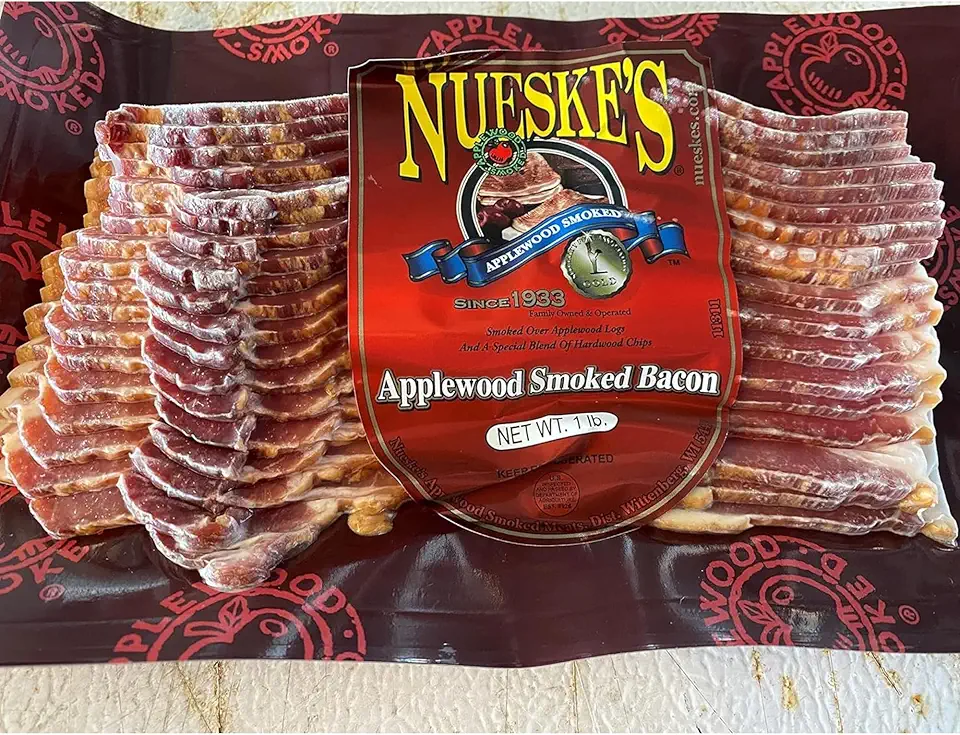 Nueske's Applewood Smoked Bacon 1lb Packs (4)
$149.98
View details
Nueske's Applewood Smoked Bacon 1lb Packs (4)
$149.98
View details
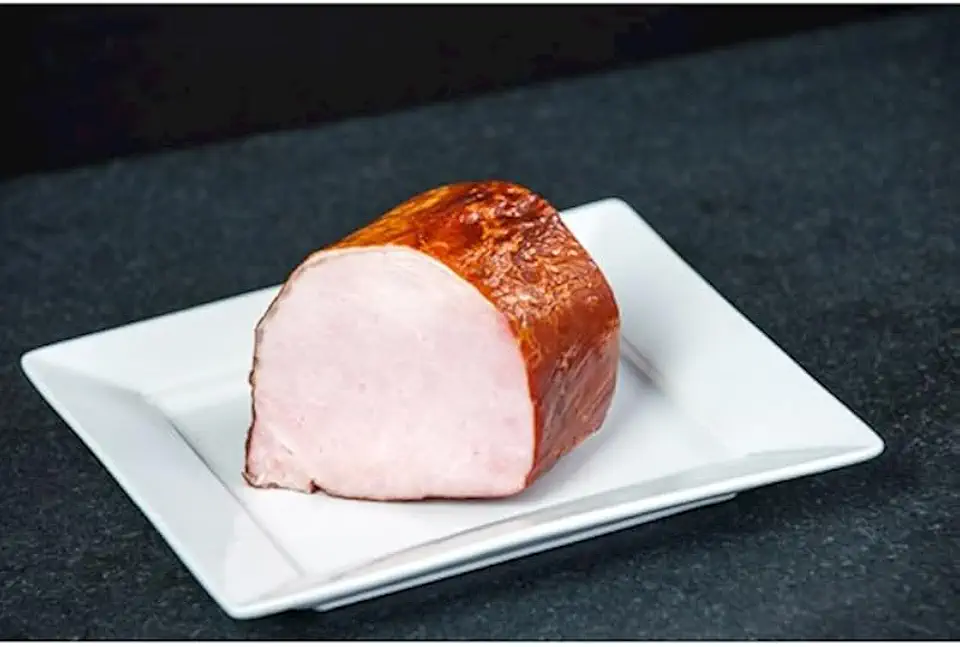 Pulaski Canadian Bacon 4.5 lb - Fully Cooked, Smoked Pork Bacon - Ideal Lunch Meat - Perfect for Breakfast, Sandwich, Charcuterie board, Keto-Friendly Deli Meat
$59.95
View details
Pulaski Canadian Bacon 4.5 lb - Fully Cooked, Smoked Pork Bacon - Ideal Lunch Meat - Perfect for Breakfast, Sandwich, Charcuterie board, Keto-Friendly Deli Meat
$59.95
View details
Instructions
Step 1
In a large mixing bowl, combine warm milk and fresh yeast. Stir until dissolved and let it sit for about 10 minutes until bubbly.
Add softened butter, eggs, and sugar to the mixture. Combine thoroughly before adding< strong> flour.
Gradually incorporate the flour and salt until a soft dough forms. Knead the dough on a floured surface for about 10 minutes until smooth and elastic.
Step 2
Place the kneaded dough into a greased bowl, covering it with a damp cloth. Allow it to rise in a warm place for about 1 hour, or until it doubles in size.
Step 3
If you are making the gastro-version, prepare the fillings by mixing the chopped bacon, cheese, and sun-dried tomatoes in a bowl. Set aside for later use.
Step 4
Once the dough has risen, punch it down and turn it onto a floured surface. Divide into equal portions.
For the classic version, shape the dough into balls and place them in a greased baking pan. For the gastro-version, flatten each portion, add the filling, and then reshape into balls.
Step 5
Cover the shaped dough with a cloth and let it rise for another 30 minutes. Preheat the oven to 180°C (350°F).
Bake for 25-30 minutes or until the tops are golden brown. Let cool slightly before serving.
Servings
When it comes to serving your delicious Easter breads, the possibilities are endless! For the classic loaf, consider pairing it with a spread of creamy butter or a sweet homemade jam. Each slice will radiate warmth and nostalgia, making your guests reminisce about holiday gatherings in their childhood. 🍞💖
For the gourmet version, why not try serving it alongside a fresh salad? The savory notes of bacon and cheese complement crisp vegetables beautifully, enhancing the entire experience. Another fun presentation idea is to slice it into bite-sized pieces and serve it as part of a brunch platter with assorted cheeses and charcuterie. 🥗🥓
Whichever way you choose to serve these lovely breads, they're sure to be a highlight of your Easter feast! 🌸
Equipment
A sturdy mixing bowl is essential for preparing your dough. Choose a bowl that is large enough to accommodate the size of the recipe and allows for adequate mixing.
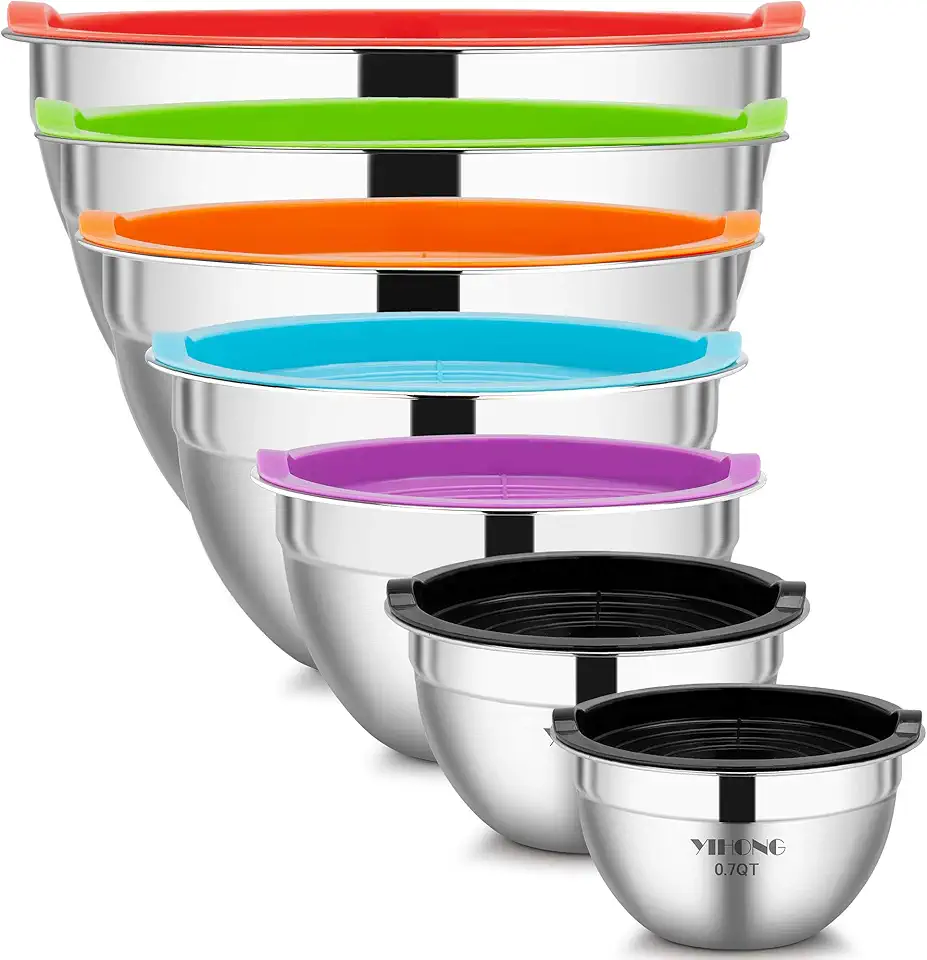 YIHONG 7 Piece Mixing Bowls with Lids for Kitchen, Stainless Steel Mixing Bowls Set Ideal for Baking, Prepping, Cooking and Serving Food, Nesting Metal Mixing Bowls for Space Saving Storage
$27.99
$35.99
View details
Prime
best seller
YIHONG 7 Piece Mixing Bowls with Lids for Kitchen, Stainless Steel Mixing Bowls Set Ideal for Baking, Prepping, Cooking and Serving Food, Nesting Metal Mixing Bowls for Space Saving Storage
$27.99
$35.99
View details
Prime
best seller
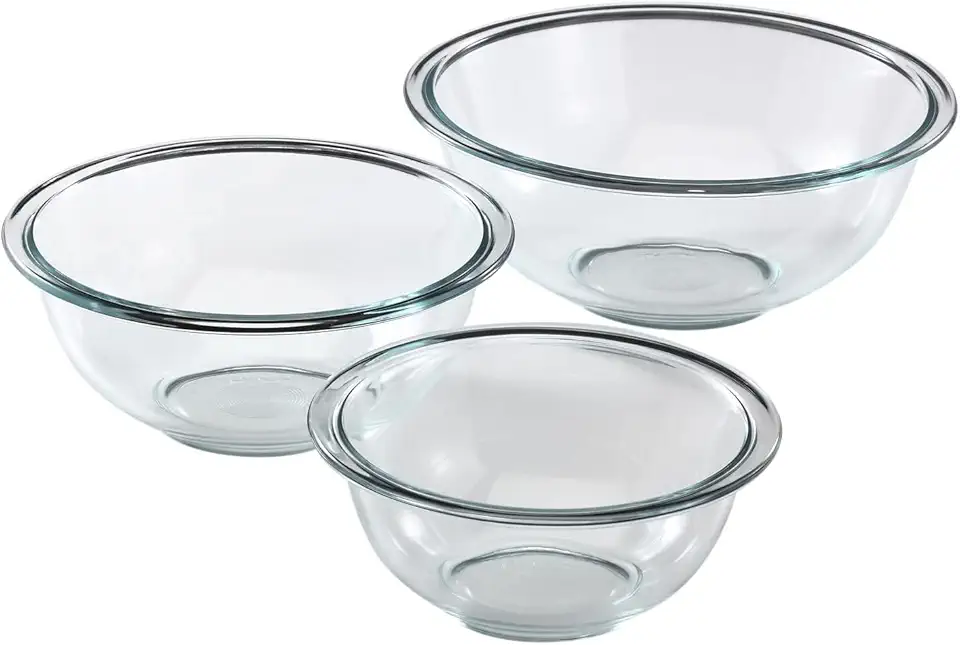 Pyrex Glass, 3-Piece, 3 PC Mixing Bowl Set
$17.53
View details
Prime
Pyrex Glass, 3-Piece, 3 PC Mixing Bowl Set
$17.53
View details
Prime
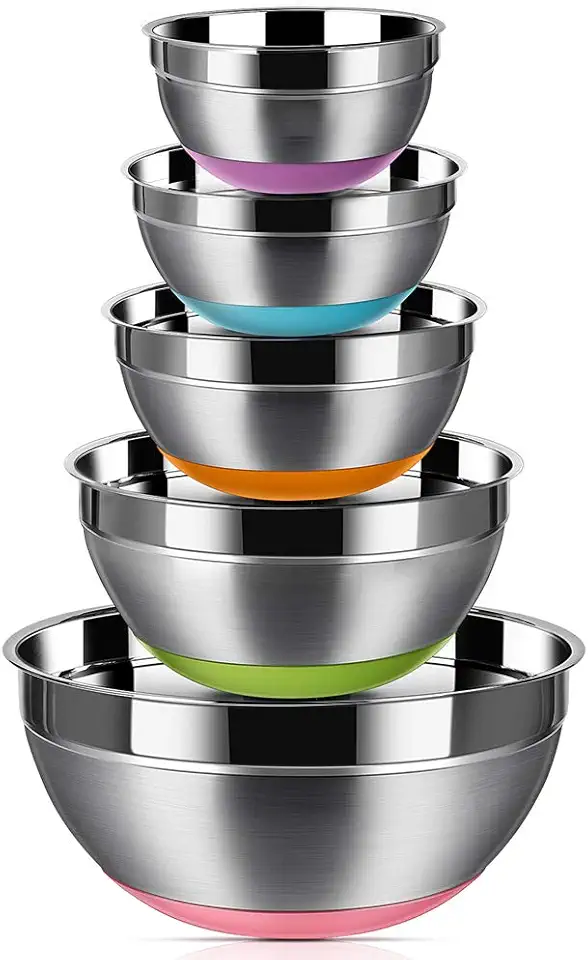 REGILLER Stainless Steel Mixing Bowls (Set of 5), Non Slip Colorful Silicone Bottom Nesting Storage Bowls, Polished Mirror Finish For Healthy Meal Mixing and Prepping 1.5-2 - 2.5-3.5 - 7QT (Colorful)
$26.99
View details
REGILLER Stainless Steel Mixing Bowls (Set of 5), Non Slip Colorful Silicone Bottom Nesting Storage Bowls, Polished Mirror Finish For Healthy Meal Mixing and Prepping 1.5-2 - 2.5-3.5 - 7QT (Colorful)
$26.99
View details
Preheat your oven to the proper temperature before baking. This ensures an even bake which is crucial for achieving that perfect rise.
 KoolMore 38 in. Full-Size Single Deck Commercial Natural Gas Convection Oven 54,000 BTU in Stainless-Steel (KM-CCO54-NG)
$3651.89
View details
Prime
KoolMore 38 in. Full-Size Single Deck Commercial Natural Gas Convection Oven 54,000 BTU in Stainless-Steel (KM-CCO54-NG)
$3651.89
View details
Prime
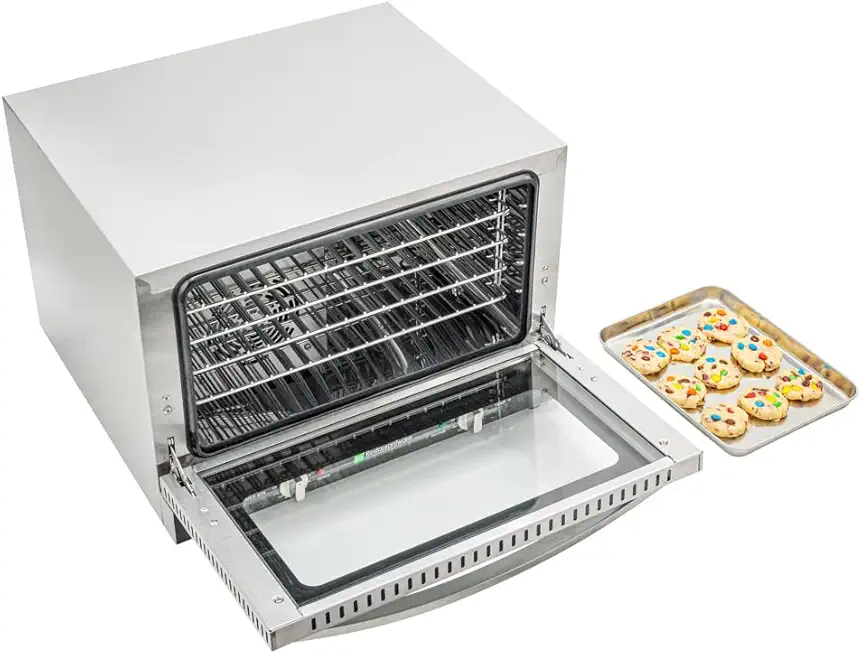 Restaurantware Hi Tek Half Size Convection Oven 1 Countertop Electric Oven - 1.5 Cu. Ft. 120V Stainless Steel Commercial Convection Oven 1600W 4 Racks Included
$1077.29
View details
Prime
Restaurantware Hi Tek Half Size Convection Oven 1 Countertop Electric Oven - 1.5 Cu. Ft. 120V Stainless Steel Commercial Convection Oven 1600W 4 Racks Included
$1077.29
View details
Prime
 Emeril Lagasse 26 QT Extra Large Air Fryer, Convection Toaster Oven with French Doors, Stainless Steel
$189.99
View details
Emeril Lagasse 26 QT Extra Large Air Fryer, Convection Toaster Oven with French Doors, Stainless Steel
$189.99
View details
Using a well-greased or parchment-lined baking pan will help release your bread easily once baked. Opt for a pan that matches the shape of the bread you are making.
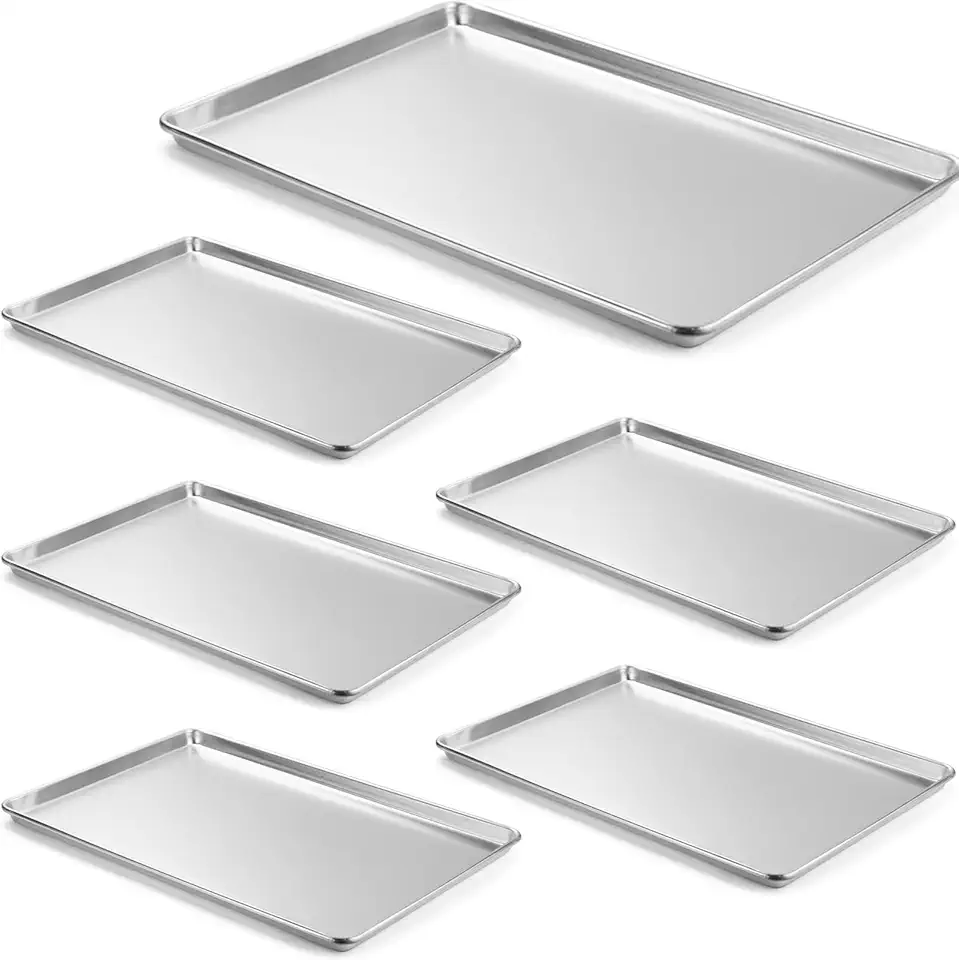 CURTA 6 Pack Aluminum Sheet Pan, NSF Listed Full Size 26 x 18 inch Commercial Bakery Cake Bun Pan, Baking Tray
$99.99
View details
Prime
best seller
CURTA 6 Pack Aluminum Sheet Pan, NSF Listed Full Size 26 x 18 inch Commercial Bakery Cake Bun Pan, Baking Tray
$99.99
View details
Prime
best seller
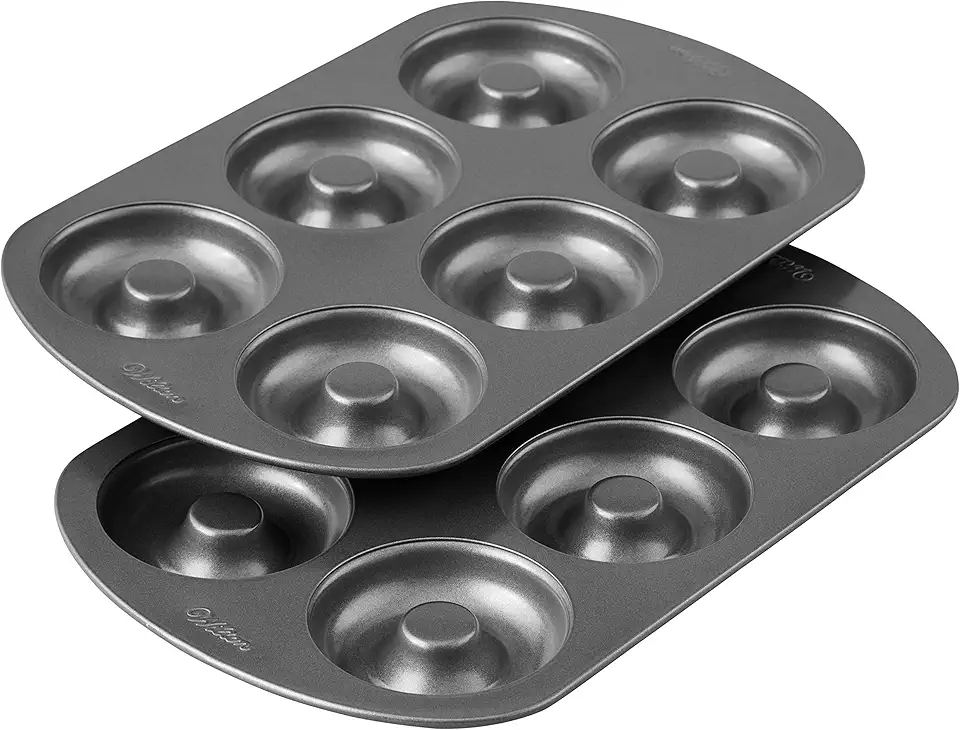 Wilton Non-Stick 6-Cavity Donut Baking Pans, 2-Count
$17.98
$20.79
View details
Prime
best seller
Wilton Non-Stick 6-Cavity Donut Baking Pans, 2-Count
$17.98
$20.79
View details
Prime
best seller
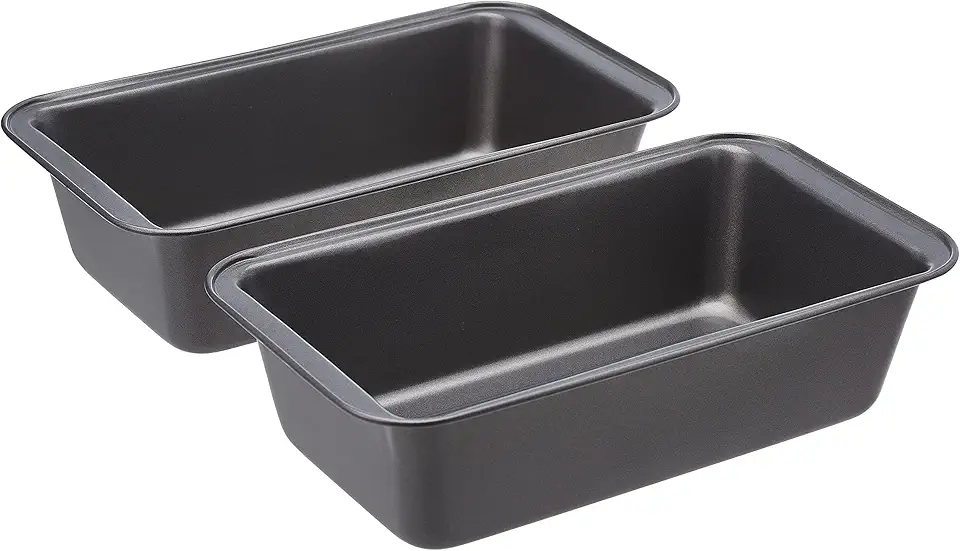 Amazon Basics Rectangular Baking Bread Loaf Pan, 9.5 x 5 Inch, Set of 2, Gray
$13.49
View details
Amazon Basics Rectangular Baking Bread Loaf Pan, 9.5 x 5 Inch, Set of 2, Gray
$13.49
View details
A whisk is great for blending dry ingredients and ensuring there are no lumps in your dough, leading to a smoother, fluffier loaf.
 OXO Good Grips 11-Inch Balloon Whisk
$10.93
$11.95
View details
Prime
best seller
OXO Good Grips 11-Inch Balloon Whisk
$10.93
$11.95
View details
Prime
best seller
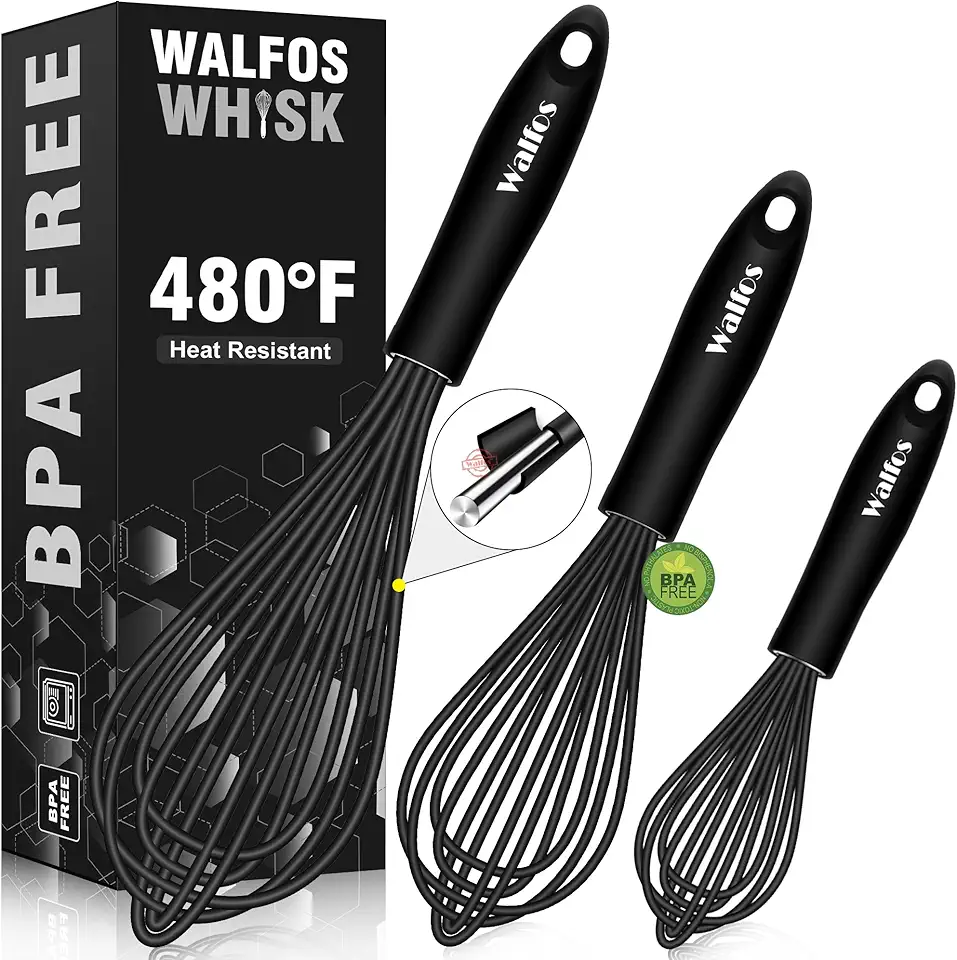 Walfos Silicone Whisk,Stainless Steel Wire Whisk Set of 3 -Heat Resistant 480°F Kitchen Whisks for Non-stick Cookware,Balloon Egg Beater Perfect for Blending,Whisking,Beating,Frothing & Stirring,Black
$11.89
$14.99
View details
Prime
Walfos Silicone Whisk,Stainless Steel Wire Whisk Set of 3 -Heat Resistant 480°F Kitchen Whisks for Non-stick Cookware,Balloon Egg Beater Perfect for Blending,Whisking,Beating,Frothing & Stirring,Black
$11.89
$14.99
View details
Prime
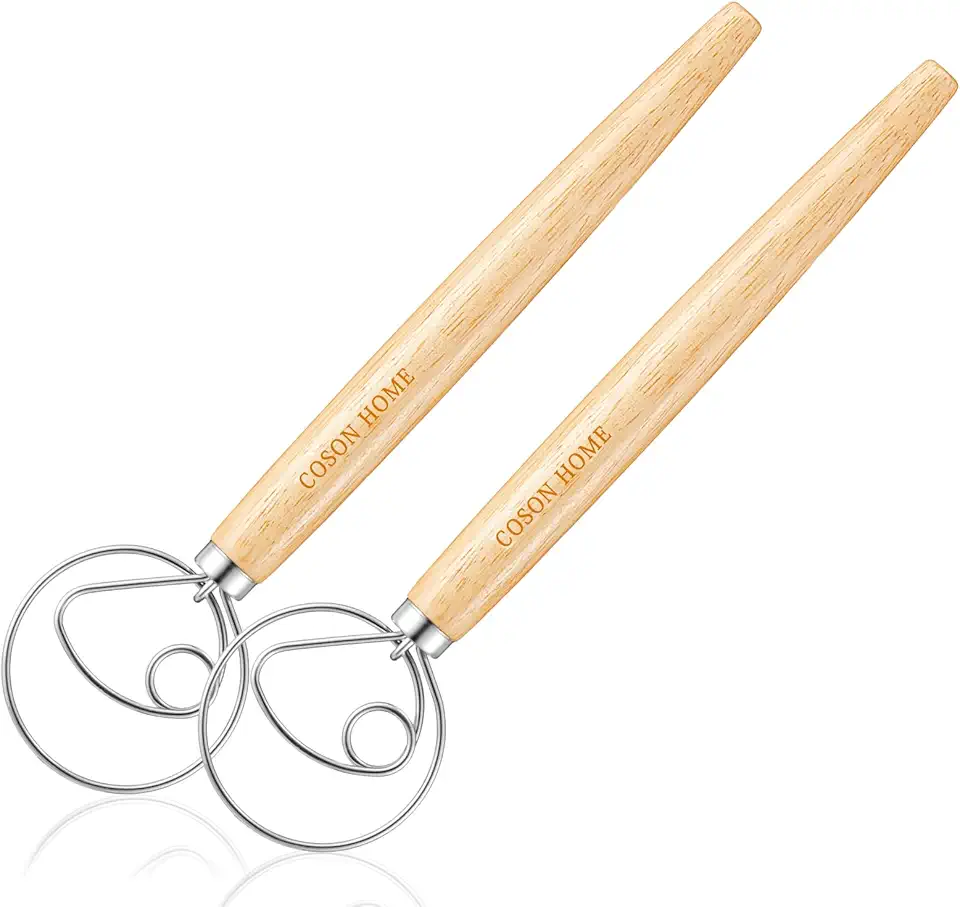 Pack of 2 Danish Dough Whisk Blender Dutch Bread Whisk Hook Wooden Hand Mixer Sourdough Baking Tools for Cake Bread Pizza Pastry Biscuits Tool Stainless Steel Ring 13.5 inches 0.22 lb/pcs…
$9.80
$14.99
View details
Pack of 2 Danish Dough Whisk Blender Dutch Bread Whisk Hook Wooden Hand Mixer Sourdough Baking Tools for Cake Bread Pizza Pastry Biscuits Tool Stainless Steel Ring 13.5 inches 0.22 lb/pcs…
$9.80
$14.99
View details
Variations
If you're looking for gluten-free options, it's easier than you might think! Simply replace all-purpose flour with a high-quality gluten-free flour blend, ensuring that it contains a binding agent like xanthan gum. This will maintain the structure and softness of your breads. 🌾🚫
For those following a vegan lifestyle, you can substitute milk with plant-based alternatives such as almond or oat milk, and use a flaxseed mixture for eggs. You'll still achieve that moist texture and rich flavor without any animal products! Enjoy your feast with everyone at the table, regardless of dietary preferences! 🌱✨
Faq
- What can I do if my dough doesn't rise?
If your dough isn’t rising, ensure that your yeast is fresh and active. Warm your environment slightly by placing the bowl in a warm, draft-free area or use your oven's proofing setting if available.
- How can I tell when my bread is done baking?
- How long can I store the bread and how should I do it?
For optimal freshness, store your bread in a cool, dry place wrapped in plastic or a bread box. You can enjoy it fresh for 2-3 days, or freeze it for longer shelf life.
- Can I modify the flavor of the gourmet bread?
Absolutely! Get creative by adding herbs or spices like rosemary, garlic, or sun-dried tomatoes for a unique twist that will elevate your bread to the next level.
- Is it normal for the dough to be sticky?
Yes, sticky dough can be perfectly normal, especially with wetter recipes. Just be sure to dust your hands and work surface with flour to manage it comfortably.
- If I want a sweeter bread, what can I add?
You can add extra sugar or use sweeteners like honey or maple syrup. Just remember, too much sugar may alter your dough’s structure, so adjust other ingredients accordingly!


